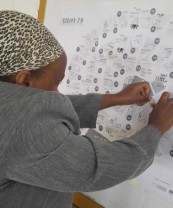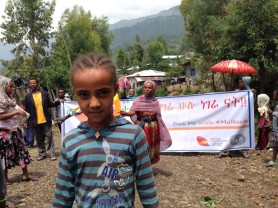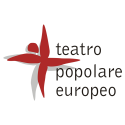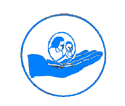





La presa di coscienza sui rischi che comporta la scelta di migrare attraverso canali irregolari è al centro dell’intervento di Teatro Sociale e di Comunità, in partnership con l’ONG CIFA, condotto all’interno del progetto Migrazione irregolare: un’alternativa possibile in Etiopia.
Ethiopia – Illegal immigration: an feasible alternative
July 2016 – December 2016
SCT Centre involved the local communities of three different woredas (the third-level administrative division of Ethiopia): Ambassel, Worebabo e Tehuledere, located in Amnara, the northern region of the Country. The several actions undertaken by our Centre are targeted to adults who might be directly or indirectly involved in illegal immigration processes and to students aged 10-14 within those communities.
Objectives: the main objective is raising awareness and developing a critical thinking about illegal migration phenomenon, by means of exploring and then sharing the knowledge of this topic.
Project promoters: SCT Centre acts in partnership with Italian ONG Cifa and Ethiopian organization IFSO (Integrated Family Service Organization); both partners have been working in Ethiopia for 7 years.
Project structure
This project took place from July to November 2016 and was divided in two phases:
Phase 1: Workshops and community festivals where held in every woreda (Ambassel, Worebabo, Tehuledere), specifically in the villages of Wuchale, Bistima e Hayk.
Phase 2: A board game named “The Path of Life” was popularized in primary and secondary schools in those woredas. The board game’s features were based on the contents that had emerged during the aforementioned workshops.
PHASE 1:
All SCT actions held in woredas were made up of two main activities:
- Workshops: 20 hours with two different groups (20 members each)
- Final event: all concluding events were modelled on local barter parades and community feasts.
The workshops
The main participants are members of the community. They would have different ages, education levels and origins. However, all of them were directly or indirectly involved in illegal migration processes.
Main goals:
group analysis of the main topic
information gathering
raising awareness of illegal immigration risks
cultural heritage valorisation.
The workshop structure wold take into account target population and their cultural background and was meant to impact three different levels: the social – affective level, the expressiveness level and the imaginary level.
Workshops developed the following topics:
- Analysis of the risks related to the illegal migration: The dynamics associated to each migration phase ( decision, planning, journey, arrival in the foreign country, new life) were explored
- Cultural heritage valorisation
- Coffee ceremony analysis – this ritual is strongly rooted in the Ethiopian tradition. Thus, the ceremony builds up the dramaturgical structure of the ceremony and becomes a symbolic act.
- Setting up an “Orchestra”: every participant was asked to present a sound of their territory by using both body and voice. A human soundscape was created by alternatively or simultaneously “switching on and off” each contributor; it would become a symbol of the village itself.
The final event
Each activity run by SCT Centre in each woreda would lead to a closing event, such as organising the coffee ceremony – crucial for the Ethiopic culture -aiming to involve both workshop participants and local institutions. . Two formats were used:
- The Barter Parade. Workshop participants and SCT Centre staff would go across the village in a parade made up of music, jugglery and traditional dance. During the parade, the act of swapping takes place: each villager is asked to contribute to the parade with one coffee bean, while someone takes a picture of that moment. They were told they would find their bean together with the other ones later on. Beans were actually used to brew coffee, which the whole community would share during the party. All community members were invited to join the celebration.
- The community celebration. In each woreda, a Community Celebration was organised according to the characteristics of the village. One of its main purpose was to make people realise that every complex event is built up of every single person’s contribution.
PHASE 2
The second phase aims to extensively diffuse workshops’outcomes across the community. The goal of the second phase consists of reaching youth, who are likely to be involved in illegal migration once they grow up. To reach this goal, the board game “Path of Life” was created according to the main outcomes of the workshops. Afterwards, the board game would be popularised in schools by involving both children (aged 10 – 14) and their teachers.






